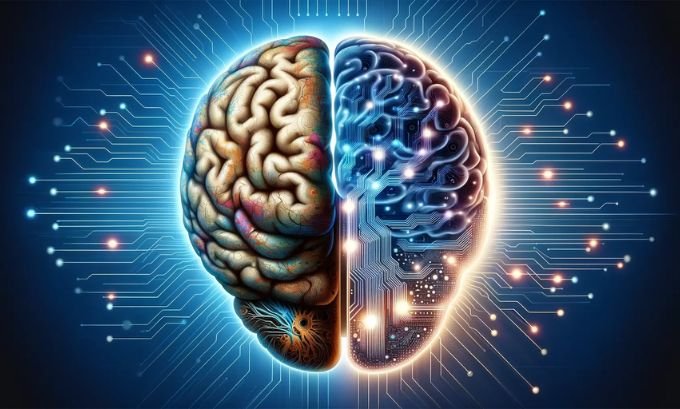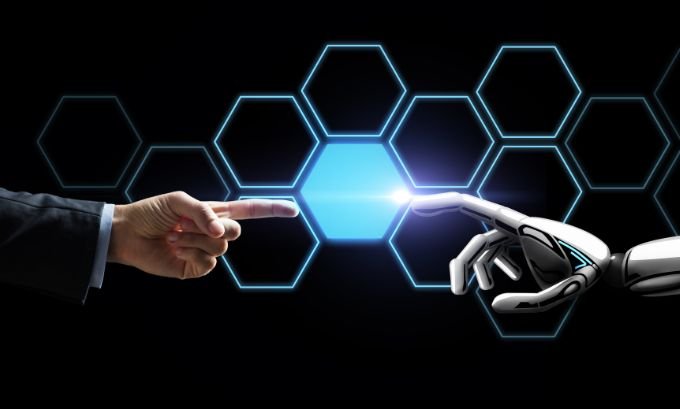In the rapidly evolving world of technology, one question keeps resurfacing: AI vs human—which is truly superior? While artificial intelligence excels at speed, accuracy, and data processing, human intelligence still dominates in imagination, empathy, and personal experience. Let’s explore this fascinating interplay between machines and minds.
What is AI vs Human Intelligence?
AI (Artificial Intelligence) refers to machines and systems designed to perform tasks that usually require human intelligence. This includes generative AI, machine learning, natural language processing, and style replication. AI learns from massive datasets, identifies patterns, and applies knowledge in ways that mimic human reasoning—but without consciousness or feelings.
Human intelligence, on the other hand, is shaped by evolution, personal experiences, and social interactions. It encompasses one-shot learning, empathy, imagination, and multisensory integration. Humans not only process information—they interpret it through a deeply personal lens.
So, in simple terms: AI can replicate knowledge and styles, but humans create meaning and emotional depth.
How AI Works vs Human Creativity
Imagine feeding AI thousands of works from Studio Ghibli. In seconds, it can generate an image in a Ghibli style. Or consider ChatGPT producing poems inspired by Rabindranath Tagore. AI mimics patterns, not inspiration.
Humans, however, absorb life itself. Jiddu Krishnamurti, the philosopher, argued that our minds are conditioned, yet we can transcend repetition through observation and reflection. Writers like Mark Twain remind us that even “new” ideas are recombinations of older ones. But this recombination in humans is enriched by personal experience, emotion, and context—something AI cannot replicate.
Personal Experience in Filmmaking
Take the film industry as a lens to understand AI vs human intelligence:
- Anurag Kashyap channels his personal struggles, emotions, and socio-political observations into films like No Smoking and Dev D.
- Dibakar Banerjee creates stories that defy formula, blending real-life experiences with narrative innovation.
- Quentin Tarantino openly admits influence from directors like Sergio Leone, yet his films remain unmistakably his own due to his personal interpretation and storytelling style.
AI could replicate visual or narrative patterns but cannot experience the world, form emotional connections, or understand societal nuances—key ingredients in impactful art.

Strengths of AI
AI brings clear advantages that amplify human capability:
- Speed: Processes millions of data points in seconds.
- Accuracy: Detects patterns humans might miss.
- Scalability: Can perform repetitive tasks without fatigue.
- Generative Creativity: Produces art, music, or text in the style of famous artists like Van Gogh, Shakespeare, or Studio Ghibli.
- Accessibility: Democratizes creative tools, allowing individuals to create without large teams.
Areas for Improvement
However, AI is not perfect:
- Lack of empathy: Cannot understand human emotions or context fully.
- No genuine imagination: Generates mashups but cannot conceive truly novel concepts.
- Dependence on data: Creativity is limited to what it has been trained on.
- Ethical risks: Biases in training data can propagate misinformation.
- Job displacement concerns: Especially in repetitive or formulaic creative tasks, from film editing to music production.
AI vs Human: Comparison Table
| Feature | Human Intelligence | Artificial Intelligence |
| Learning Style | One-shot learning | Multi-shot learning; requires large datasets |
| Creativity | Original thought, inspired by personal experience | Synthetic recitation, style replication |
| Empathy | Understands emotions, intuition, social context | Limited or no emotional understanding |
| Speed | Limited, requires rest | Extremely fast, operates 24/7 |
| Adaptability | Flexible, context-driven | Data-dependent, limited by algorithms |
| Multisensory Input | Integrates sight, sound, touch, taste, smell | Mostly single-mode input (text, images, audio) |
| Inspiration Sources | Life experience, dreams, personal observation | Pre-existing data, style patterns |
| Cost-effectiveness | Individual effort can be high | Scales cheaply, reduces labor costs |

Real-Life Use Cases
- Creative Empowerment: A solo animator can use AI to produce a Ghibli-style short film without a large studio.
- Scriptwriting: AI can draft plot outlines or dialogues, but human writers refine them with emotional depth.
- Music Production: AI replicates classic styles, but musicians like live performers bring nuance, improvisation, and emotion.
- Research and Analysis: AI accelerates data insights, freeing humans to focus on interpretation and strategy.
FAQs About AI vs Human
Q1: Can AI ever think like a human?
A: No, AI lacks consciousness, empathy, and personal experience. It can imitate patterns but not human insight.
Q2: Are humans better at creative tasks than AI?
A: For tasks requiring originality, emotion, or personal context, humans excel. AI is best for pattern replication and speed.
Q3: Will AI replace artists and filmmakers?
A: AI may replace formulaic or repetitive tasks, but independent creators like Anurag Kashyap remain irreplaceable due to their personal experiences.
Q4: How does AI help human creativity?
A: AI serves as a tool for idea generation, style exploration, and production efficiency, empowering individual creators.
Q5: Which industries are most impacted by AI?
A: Film, music, journalism, customer service, and manufacturing—primarily roles involving repetitive or data-driven tasks.
Q6: Can AI create original art?
A: It can generate art by recombining existing patterns, but originality in the human sense requires experience, emotion, and context.
Q7: How can humans collaborate with AI effectively?
A: Use AI for repetitive, analytical, or generative tasks, while humans focus on vision, storytelling, and emotional resonance.
Conclusion
AI vs human is not a battle but a partnership. While AI excels in speed, pattern recognition, and large-scale data handling, humans remain unmatched in imagination, empathy, and personal expression. Filmmakers like Anurag Kashyap, Dibakar Banerjee, and Quentin Tarantino exemplify how personal experience shapes creativity in ways AI cannot replicate.
The key takeaway? Embrace AI as a tool, not a replacement. Leverage its strengths to enhance human creativity, while preserving the authenticity, emotion, and innovation that make art uniquely human.
For those seeking creative inspiration rooted in authentic design and culture, Tokyo Mart offers a curated collection that reflects the very human touch AI can’t replicate.
Author Bio
Michael Bennett is a researcher and educator specializing in AI ethics, human-AI collaboration, and creative technology. He is the director of curriculum for responsible AI programs at Northeastern University and has written extensively on AI’s role in society and creativity.
References:
- Krishnamurti, J. (1954). The First and Last Freedom. Harper.
- Twain, M. (1885). Adventures of Huckleberry Finn.
- Bennett, M. (2024). AI vs Human Intelligence: Differences Explained. Northeastern University.
- Studio Ghibli film archives and animation analyses.
- Film studies on Anurag Kashyap, Dibakar Banerjee, and Quentin Tarantino.


